I recently mentioned Flo Braker in a video I made, and a commenter said her Devil’s Food Cake was a family favorite:
I absolutely love Flo Braker’s Devil’s Food Cake. I’ve been making it for birthdays for over 40 years. There is a problem with it though…it always gets completely eaten -no leftovers. Many years ago we had an email conversation. She was such a sweetheart.
Someone in the comments also asked me how old I was (!), since I’d mentioned my birthday was in late December. I don’t want to dwell on that 😉, but let’s talk about Flo for a minute.
Thanks to the commenter (thank you!), a flood of memories came back regarding Flo. I got to meet Flo when she came to help us bake for an Aid and Comfort benefit that Chez Panisse was organizing. It came at a time when a proposition was on the ballot in California to quarantine people with HIV. The Bay Area was especially hard-hit, and we lost a lot of people: friends, family, co-workers, and fellow members of our baking community.

We were all pretty shell-shocked, but as is often the case, bakers gathered together to help. I got to know Flo very well.
Like most people, I immediately fell in love with the well-dressed woman with picture-perfect makeup, impeccably manicured hands, not a hair out of place, and a velvety-deep voice…who knew her way around a baking kitchen. We became good friends—although a lot of people in the baking community became close to her; she was probably the most generous person I’ve ever met. I used to say that when they start cloning people, they should start with her.
Here’s Flo baking with Julia Child:
Flo wowed the baking world with her first book, The Simple Art of Perfect Baking. She worked with legendary cookbook editor Maria Guarnaschelli, who was known for publishing a number of amazing cookbooks but also had a reputation for tormenting cookbook authors.
One journalist described her as having a “mercurial temper” in an article when she was publishing the controversial 75th-anniversary edition of The Joy of Cooking. Each chapter was supposed to be written by a different cookbook author, who had expertise on the subject…and she ended up firing a number of them without explanation. (One critic referred to that edition of The Joy of Cooking as “joyless.” Others love it.)
Judy Rodgers got along fine with her, but let’s just say she was quite a character, and a legend, and may she rest in peace. Neither Flo nor Maria are still with us, but Flo told me her phone would ring at 6am (California time) with her editor screaming at her that a photo of a bundt cake looked like a toilet seat. She said to me, “Imagine, I’m lying in bed, naked, and the phone rings, and I’m sitting upright while she was screeching at me on the other end.”
Although Flo looked and dressed “like a doctor’s wife*,” the image of her naked, getting hollered at by her editor, is still embedded in my memory.
I can’t imagine anyone yelling at Flo. Nor can I imagine anyone not liking this cake.
Devil’s Food Cake isn’t known in France, nor are American-style layer cakes, and I had to explain to Romain that it got its odd name because the color of the cake was reddish in hue.
Flo was, indeed, the perfect baker. The Simple Art of Perfect Baking covers EVERYTHING you need to know about baking cakes. But a few things have changed since it was first published in 1985.
Figuring you can teach an old dog new tricks, I was excited to discover silicone round cake pan liners at a professional products show. They were still in development at the time, and I put my name on the list to get some when they came out. I dislike cutting parchment cake circles, and even though you can now buy those, silicone baking sheets imported from France were catching on in the U.S., and the cake pan liners sounded great to me. So even though the instructions for the cake said otherwise, I used my silicone cake pan lines, patting myself on the back for how wise I was.
Well…unfortunately, the cake stuck pretty firmly to them, and I had to wrestle the silicone baking mats from the bottom of the cake with the sharpest knife I had. So when a recipe writer says, “Follow the recipe”—do it.
In Flo’s heyday, baking recipes would often call for “2 cups sifted flour,” which meant you had to sift the flour and then measure it, which was a messy affair. I did doubt that her 2 cups of sifted flour would be 200 grams (normally 1 cup of flour equals 140 grams). It was not common to publish recipes in metrics back then in America, so I tested her conversion, and indeed, it was spot-on.
The cake was a revelation, and it was wonderful to remember Flo, who I miss dearly. Her daughter ended up having children, and she was devoted to her grandchildren, so I didn’t see as much of her as I used to.
When she passed away, due to a fall, I’d heard she hadn’t been doing well for a while, which was hard to believe as she was such as dynamic presence in the kitchen, and in my life. She and her husband had visited me in Paris once, and we had a lovely evening together, which was the last time I saw her.
I was glad she spent her final years doing what she wanted to do, and she left us with a legacy of her recipes, which always come out simply perfect, such as this one for Devil’s Food Cake.
Devil’s Food Cake
8 servings
Adapted from The Simple Art of Perfect Baking by Flo Braker
Flo’s original recipe called for cake flour. We don’t get American-style cake flour in France, so I used regular (T65) white flour, which is my standard baking flour and is similar to U.S. all-purpose flour. Her original amount was 2 cups (200g) sifted cake flour, which means you sift the flour first, then measure it, if using cups. Or sift it right into the measuring cup, and level it off with a knife. Or to make it easier, just go by weight. You can approximate cake flour by measuring out 2 cups (200g) of flour, then replacing 1/4 cup (40g) of it with an equal amount of cornstarch and sifting them together a few times.
Cake flour is lower in protein than all-purpose flour, and makes cakes a little more tender. But as King Arthur Baking in their article about the differences**, regarding substituting all-purpose for cake flour: “Yes you can. You’ll wind up with a similar cake, just with a slight different in texture and crumb.” In other words, don’t worry about it.
Unsweetened chocolate is commonly used for baking in America, but not used much in Europe. It’s called 100% cacao in France, and you can find it at G. Detou in Paris and in natural food stores, as well as some supermarkets. If you live elsewhere, Lindt makes a 99% and a 100% bar.
The recipe originally was baked in an 11- x 17-inch (27cm x 43cm) rectangular pan, although I baked it in two 8-inch (20cm) rounds, to layer. If you bake it in a rectangular pan, the baking time will be about 40 minutes, according to her book. (I haven’t tested that so do check it before that baking time.)
It’s important that the butter in the frosting be very soft before mixing it with the chocolate. It’s the middle of winter here in Paris, and my kitchen is on the cold side, so I didn’t get it to exactly the right consistency and saw a few specks of butter when I spread on the frosting. Note that this recipe uses raw eggs in the frosting. You can use pasteurized eggs if you’re avoiding raw eggs, or use my chocolate ganache frosting recipe instead.
For the cake:
2 cups (200g) sifted cake or all-purpose flour
1 teaspoon baking soda
1/4 teaspoon salt
1/2 cup (50g) unsweetened Dutch-process cocoa powder
(Plus additional flour or cocoa powder for dusting the cake pans)
1/2 cup (125ml) lukewarm water
1/2 cup (125ml) buttermilk (or plain yogurt thinned with a little milk or water)
1/2 cup (125ml) water
2 teaspoons vanilla extract
4 ounces (115g) unsalted butter, at room temperature
1 cup (200g) granulated sugar
1 cup packed (200g) light brown sugar
2 large eggs, at room temperature
For the frosting:
6 tablespoons unsalted butter, cubed, softened at room temperature or slightly warmer, if possible (see Note at end of recipe)
4 ounces (115g) unsweetened chocolate, chopped
1 cup (100) powdered sugar
2 tablespoons hot water
2 large eggs, at room temperature
1 teaspoon vanilla extract
To make the cake:
Position the rack to the middle or lower third of the oven and preheat the oven to 350ºF (180ºC).
Butter the bottom and sides of two 8-inch cake pans. Dust each with a little flour or cocoa powder, then tap out the excess. Line the bottoms with two circles of parchment paper.
Sift the flour, baking soda, and salt together in a small bowl. Set aside.
Put the cocoa powder in a small mixing bowl and whisk in 1/2 cup (125ml) of lukewarm water until it’s well combined.
In a measuring cup (or small bowl), mix together the buttermilk, 1/2 cup (125ml) water, and vanilla.
In the bowl of a stand mixer fitted with the paddle attachment, or by hand in a medium-size mixing bowl with a silicone spatula, beat the butter on medium speed until it’s smooth, about 30-45 seconds. Add the granulated sugar and light brown sugar and mix on low speed until they’re combined, then increase the speed of the mixer to medium-high and beat until the mixture is light and fluffy; it’ll take about 5-6 minutes to get there. Stop the mixer midway during mixing to scrape down the sides, to make sure everything is getting incorporated.
In a small bowl, mix together the eggs with a fork. Reduce the mixer speed to medium speed, then dribble the eggs into the butter slowly, as if you were adding oil to make mayonnaise. If the mixture looks curdled at any time, stop adding the eggs and turn the mixture to high speed to re-emulsify it. Then finish adding the eggs.
Continue mixing at medium speed until the batter is light and fluffy, about 1 minute. Stop the mixer and add the cooled cocoa powder mixture, then mix until it’s incorporated.
Remove the bowl from the mixer and use a spatula to stir in one-quarter of the dry ingredients, then add one-third of the buttermilk mixture. As Flo says here: “Repeat this procedure, alternating dry and liquid ingredients, ending with the flour. With each addition, scrape the sides of the bowl, and continue mixing until smooth, never adding liquid if any flour is visible.”
Divide the batter into the prepared cake pans. Use a spatula to (as Flo says, again) “spread the batter, working from the center outward and creating a slightly raised ridge around the outer rim.”
Bake the cakes until a toothpick inserted into the center comes out clean, between 22 and 24 minutes. Let the cakes cool on a wire rack, then run a knife around the inside edges of the pan to release them from the pans. Working with one cake at a time, set a cooling rack on top of the cake and flip both over to release the cake from the pan. Peel off the parchment paper and repeat with the other cake. Let cakes cool completely before frosting.
To make the frosting:
Put the softened, room-temperature butter in a medium-size mixing bowl.
Place the chocolate in a medium-size heatproof mixing bowl that’s absolutely dry. Set the bowl over a saucepan partially filled with water, one that will fit the bowl snugly on top. Warm the chocolate over medium heat, stirring occasionally, until it’s melted. While the chocolate is melting, have a sifter or mesh strainer ready.
Remove the bowl of chocolate from the saucepan. Place the powdered sugar in the sifter or mesh strainer and sift the sugar over the melted chocolate without stirring. Add the 2 tablespoons of hot water, then gently stir to combine. Add the eggs one at a time, stirring in the first egg completely before adding the second one, then stir in the vanilla. Don’t beat the eggs in too vigorously as you don’t want to aerate the chocolate; you just want to incorporate the eggs.
Add about one-quarter of the melted chocolate to the softened butter and stir it in with a silicone spatula until it’s incorporated. Add the rest of the melted chocolate and stir until smooth. If there are stubborn bits of butter, mash them against the side of the bowl with the spatula to mix and meld them with the chocolate.
To frost the cake, put one layer of the cake on a serving platter. Spread 1/2 cup (100g) of the frosting over the top of it. Set the second layer of cake on top of the frosting. Spread the remaining frosting over the sides and top of the cake.
Storage: Store the cake at room temperature, under a cake dome or an inverted bowl, for 2-3 days.
Note: The butter for the frosting should be very soft, almost mushy, but not melted. If your kitchen is on the cool side, as mine is, place the butter in the warmest place in your house, perhaps near a heater, but not close enough to melt it. Or you can place it in a bowl and set that over the pan of warm water that you used to melt the chocolate for a few seconds, or just enough to warm the bowl super-briefly, then remove from heat and mash the butter against the side of the bowl to smooth it out.
Flo mentions another technique, and that’s to fill a mixing bowl with hot tap water, then pour it out, drying the bowl very well. Put the butter in the bowl and use a silicone spatula to mash the butter against the sides of the bowl until it’s softened.
*Flo went to Ecole Lenôtre in France, one of the most prestigious pastry schools in the world. It’s mostly for professionals (I went there, too) who work in bakeries or restaurants, and before I went, I asked how it was for her as a non-professional cook. She told me that one day, Gaston Lenôtre, who at the time was the most famous pastry chef in the world, who the school was named after, swept into class and headed right toward her, swooping her up in his arms and giving her a big kiss.
She told me, “David, it was so funny because everyone else in the class probably thought I was some doctor’s wife or something, and they were stunned when he swept into the classroom and greeted me like that!”
In one of my classes there, my classmates were grouchy, self-important, and not very nice to me. Then, on the last day of class, the chef instructor (who was a true professional) said, “Daveed, come with me…” and grabbed my hand and gave me a tour of the entire baking facilities, introducing me to all the pastry chefs and bakers who made the cakes, candies, and tarts for Lenôtre bakeries. Wow - that made the hazing (almost) worth it.
**Interestingly the King Arthur website says their cake flour is 10% protein and Bob’s Red Mill says 5-8%. 🤷







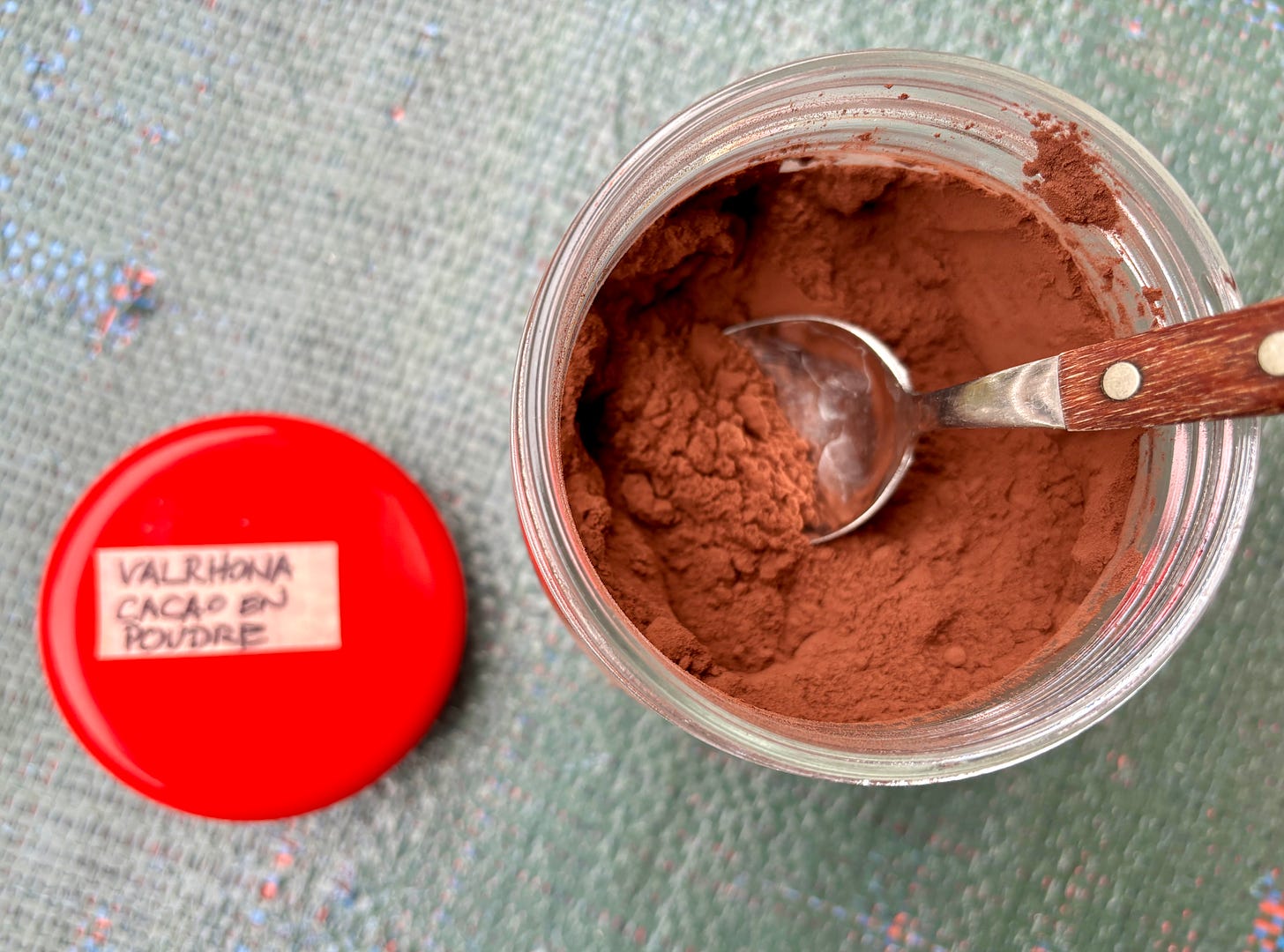
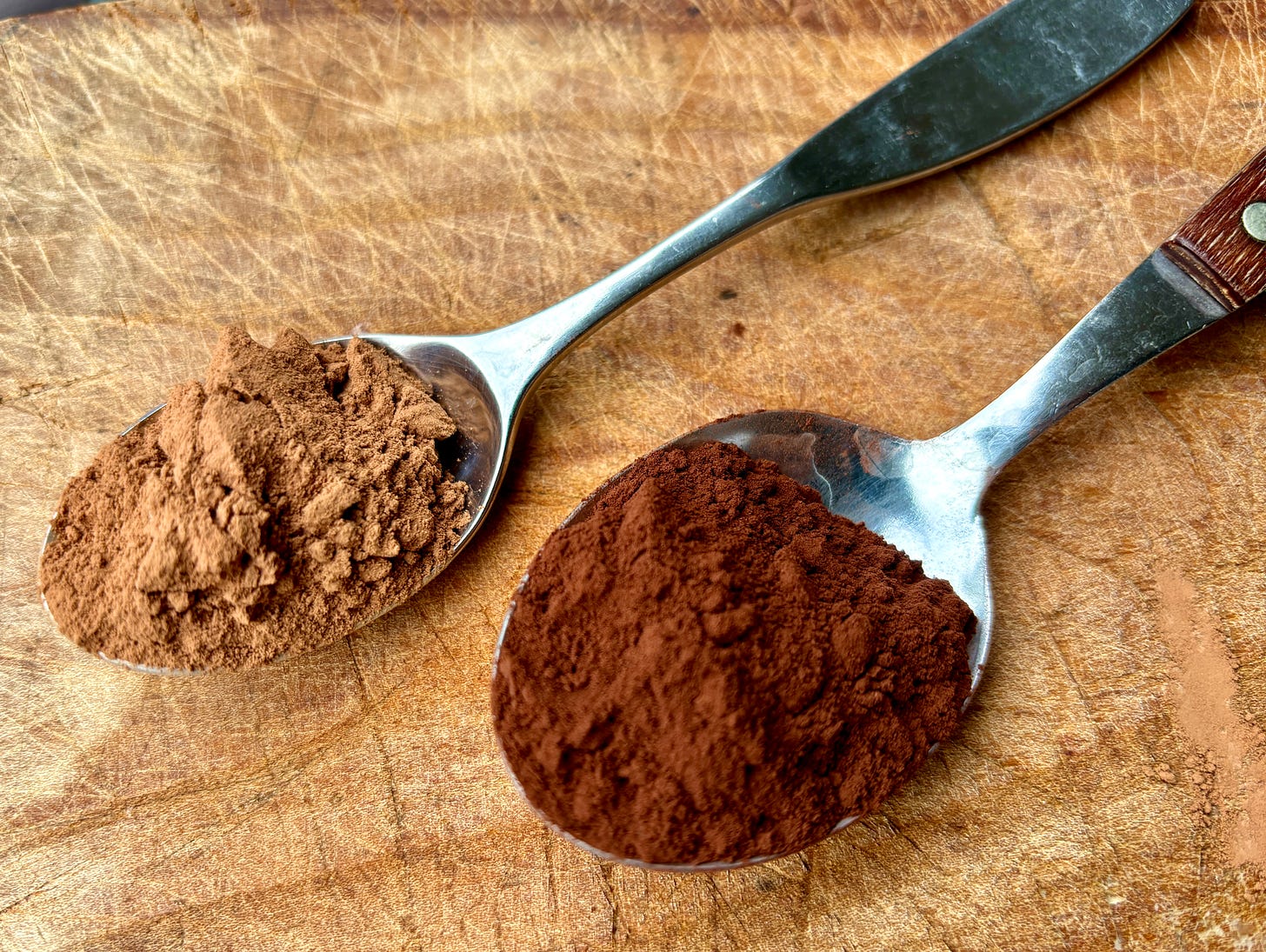
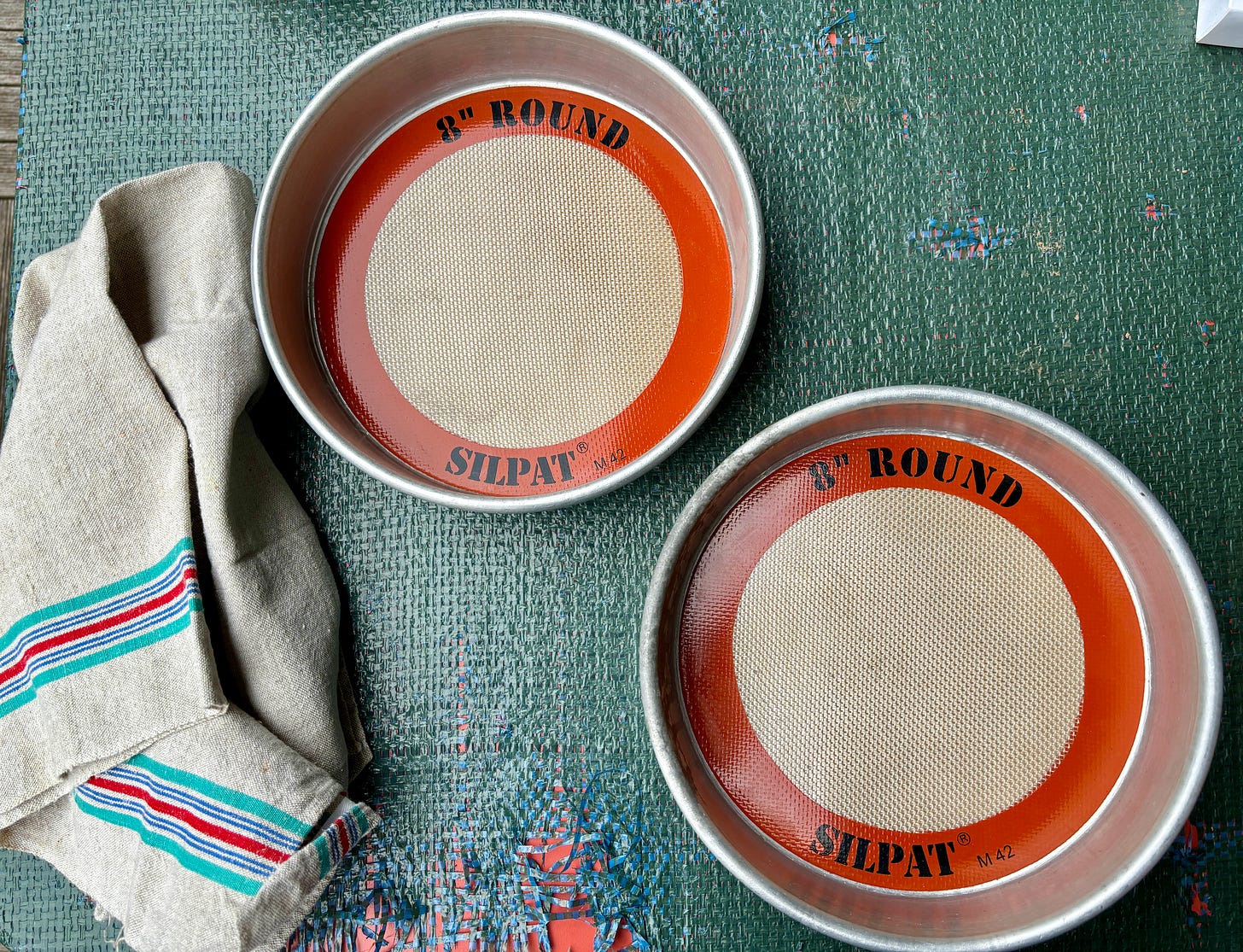
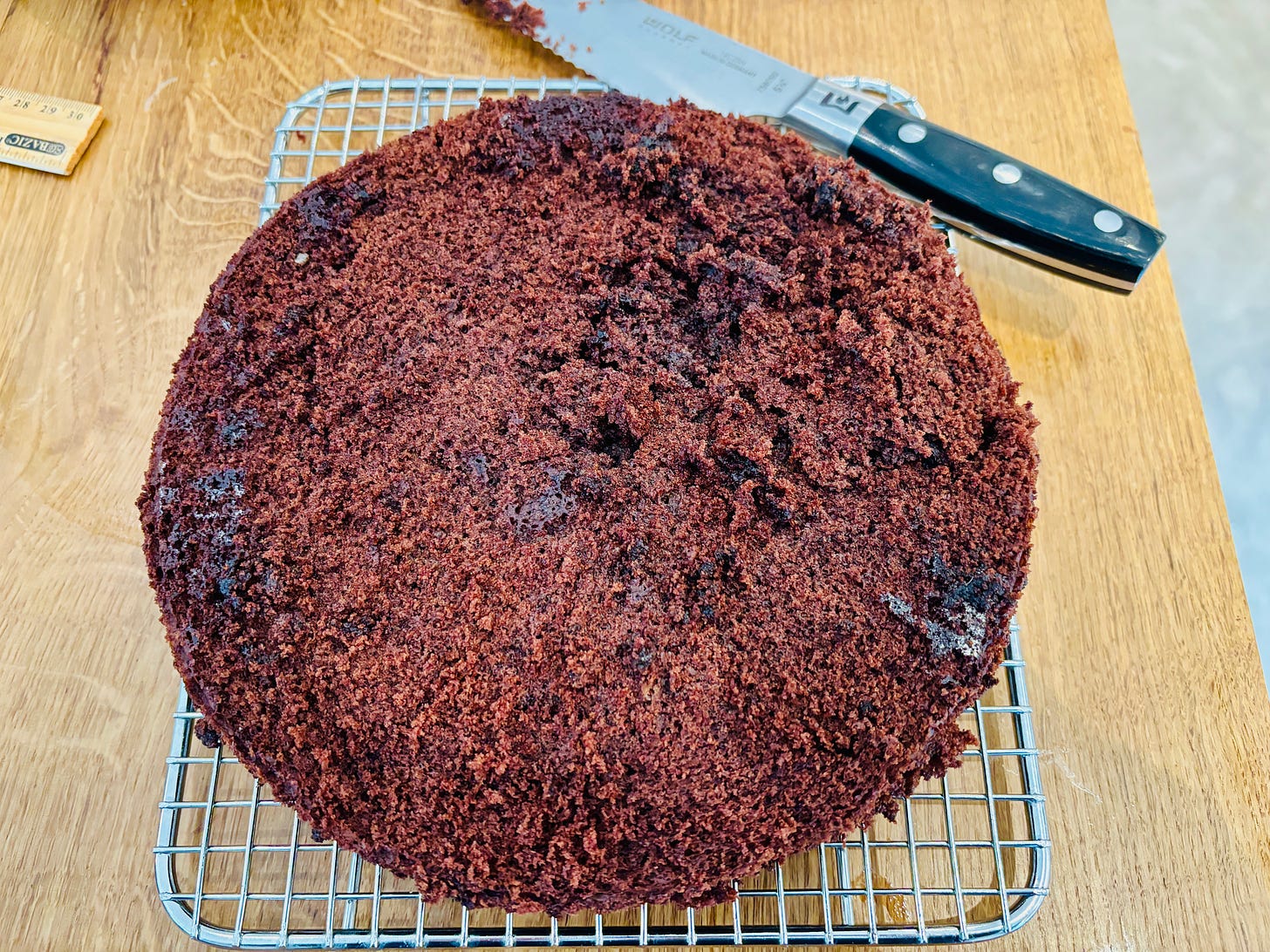
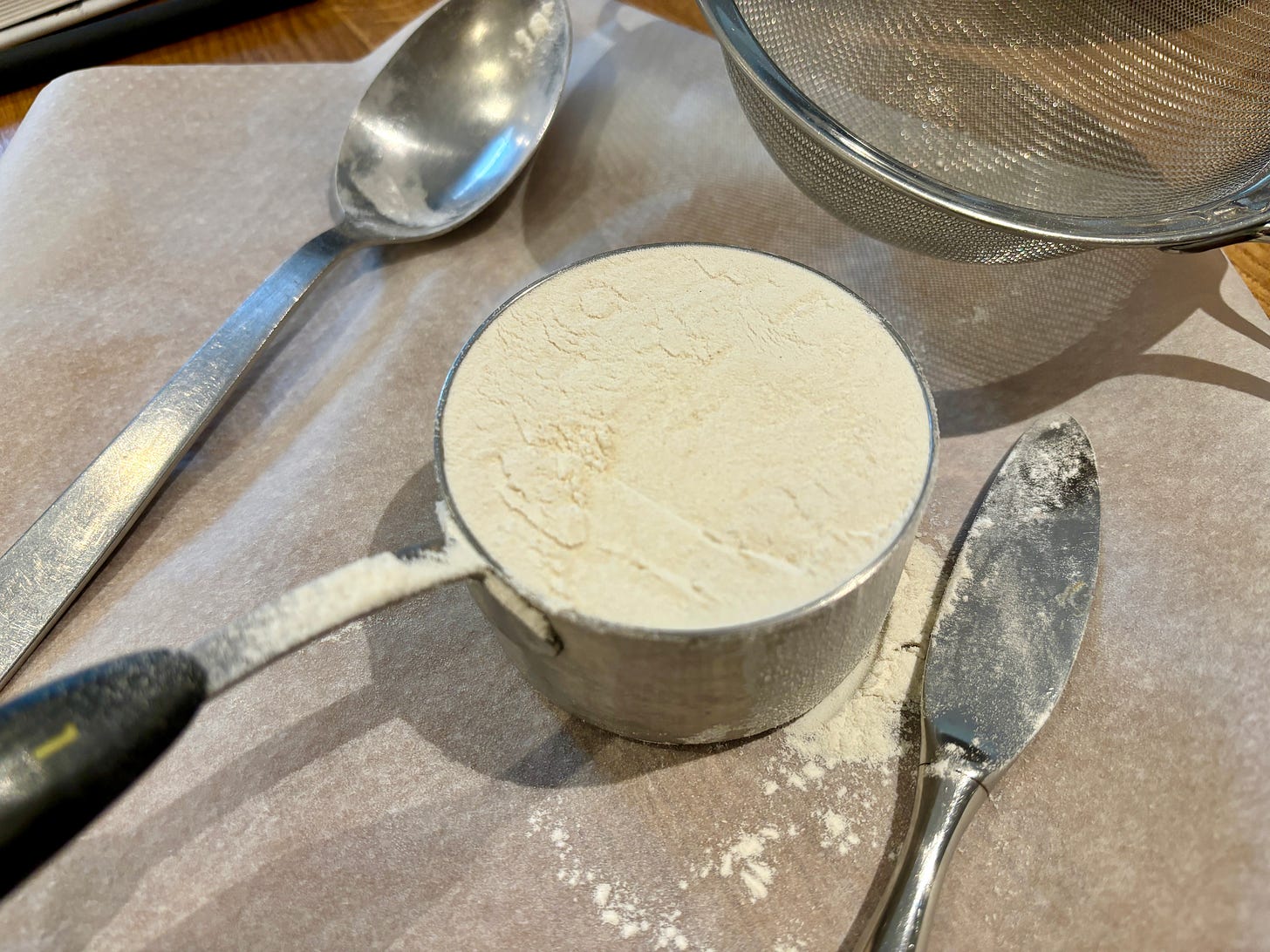
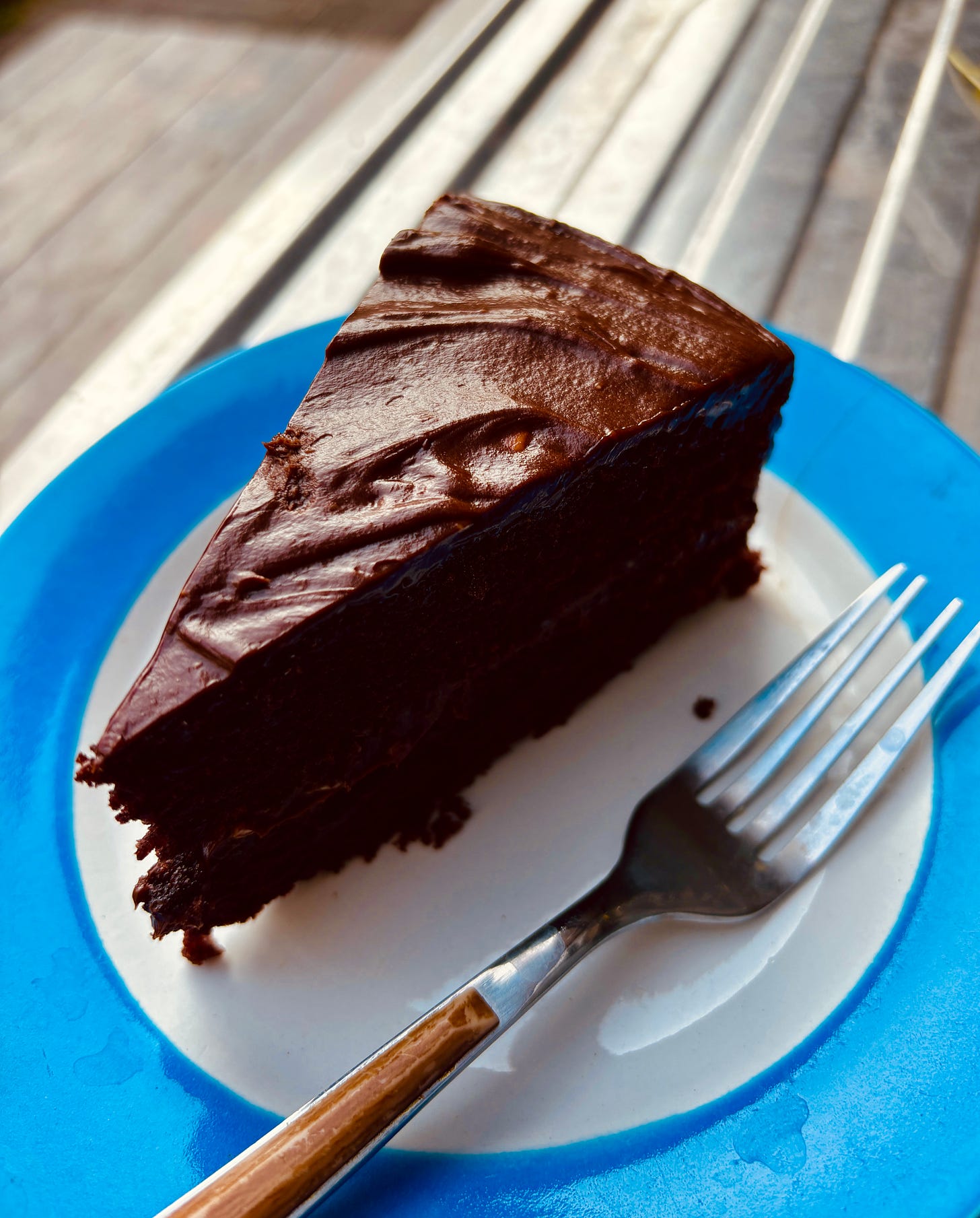


Flo was one of my dearest friends; I miss her every single day. With the generosity you mentioned she bestowed countless gifts on our household, constant reminders in many rooms in our home. There were two revisions of "SIMPLE ART", as she referred to it, one in 1992 and one in 2003. They had new photos and lots of updates. I have saved the TV video of Flo on Julia's show and never fail to enjoy the bittersweet experience of being able to watch her in action--a treasure to be sure! Thank you for writing this wonderful tribute--as well as one long ago about Flo's pain d'amande, another favorite I share with you, David!
Thank you for this lovely memoire. Your wirttings are a gift to love and life